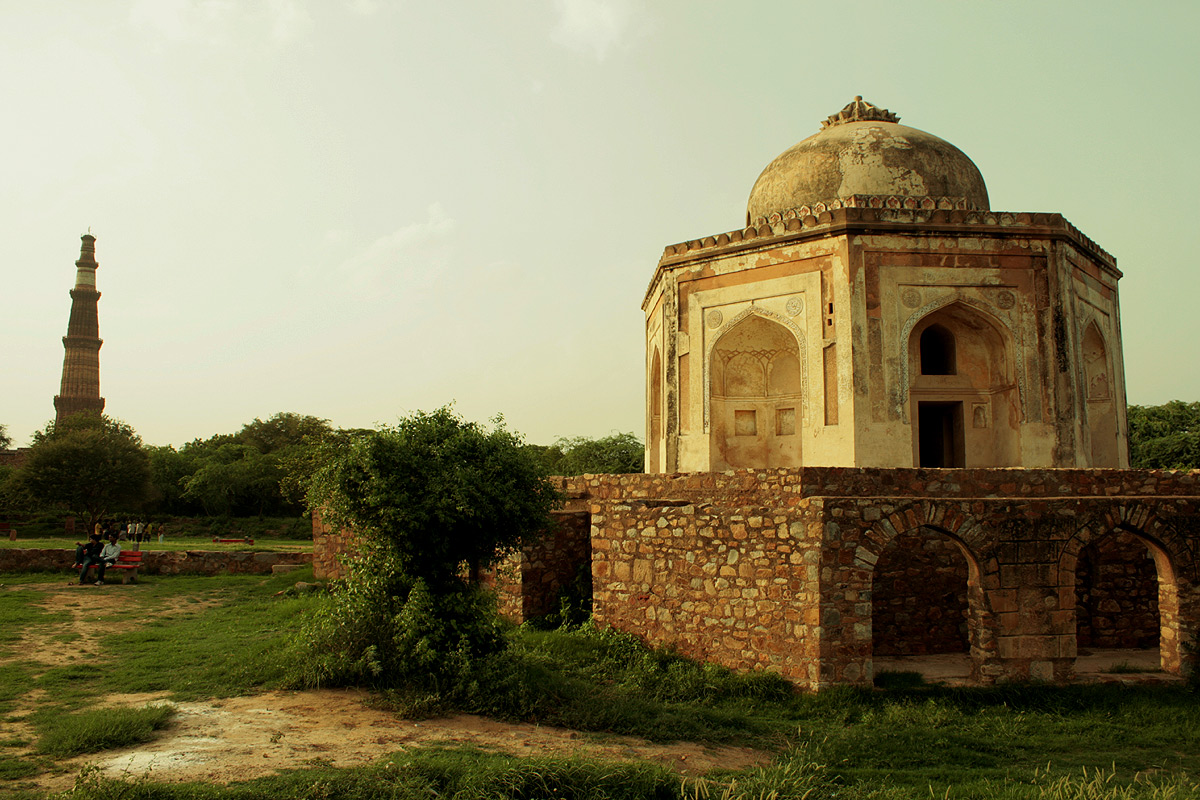The Tomb of Quli Khan nestles within the Mehrauli Archaeological Park, a silent testament to the intricate layers of Delhi's historical narrative. Constructed in the early 17th century, this monument represents a complex intersection of Mughal imperial history and later British colonial adaptation. Muhammad Quli Khan, brother of Adham Khan and part of Emperor Akbar's intimate court circle, became memorialized through this remarkable architectural creation.
The tomb's architectural design reveals exquisite Mughal craftsmanship, featuring an octagonal exterior complemented by a square interior. Intricate painted plasterwork adorns its inner spaces, while the exterior showcases delicate stucco designs and remnants of glazed tiles in vibrant blue, green, and yellow hues. Positioned on a high platform, it forms part of a broader historical complex that includes other significant medieval structures.
Sir Thomas Theophilus Metcalfe's acquisition of the tomb marked a pivotal transformation in its historical trajectory. Renaming it "Dilkusha" meaning "delight of the heart," he reimagined the space as a summer residence, introducing European landscaping elements like terraces, watercourses, and pavilions. This repurposing exemplified the complex cultural negotiations occurring during the British colonial period in India.
Remarkably, Metcalfe utilized the tomb in unconventional ways, even renting it out to honeymooning couples—a fascinating detail that highlights the fluid nature of historical spaces during colonial times. He modified the interior to accommodate living quarters, with the main room serving as a dining hall, and added distinctive features like a boathouse and artificial waterfall.
The tomb's subsequent history reflects the broader narrative of colonial and postcolonial heritage management. After the British departure, the site experienced significant neglect until the early 2000s when the Indian National Trust for Art and Cultural Heritage (INTACH) initiated comprehensive restoration efforts. These interventions not only preserved the physical structure but also reintegrated it into Delhi's rich cultural landscape.
Archaeological investigations have revealed the tomb's multilayered significance, showcasing how a single structure can embody multiple historical narratives. From its Mughal origins to its British reinvention and modern restoration, the site represents a palimpsest of cultural transformations, reflecting the dynamic nature of historical preservation in urban contexts.
The restoration of Quli Khan's Tomb has been part of a broader initiative to document and preserve the Mehrauli Archaeological Park's historical treasures. This effort goes beyond mere architectural conservation, seeking to reconstruct and communicate the complex stories embedded within these ancient structures, making them accessible to contemporary audiences.
Today, the tomb stands as a nuanced representation of Delhi's architectural and cultural evolution. Its journey from a Mughal noble's memorial to a British colonial retreat and now a carefully preserved historical site encapsulates the city's remarkable capacity for cultural reinvention and historical continuity.



